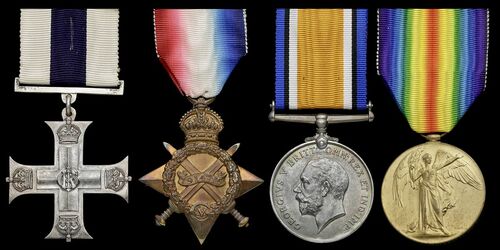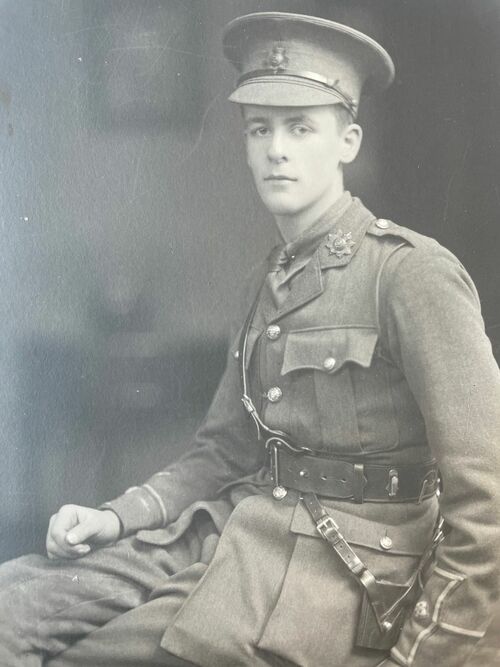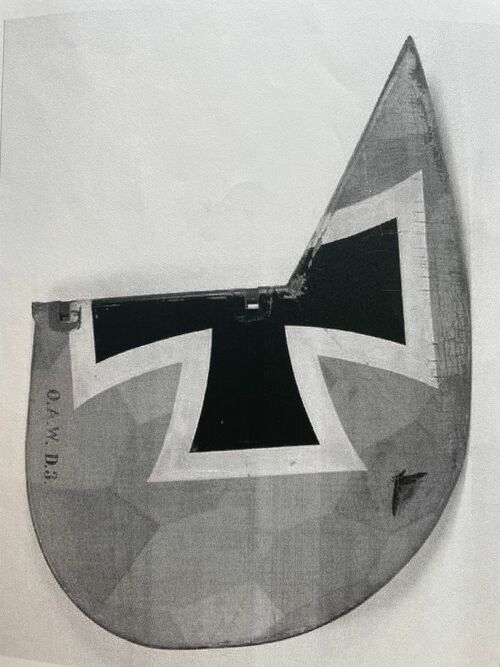Auction: 23001 - Orders, Decorations and Medals
Lot: 397
'There was a young flyer named Paul
Who thought he flew better than all!
When the Huns shot his thighs,
He said midst long sighs,
What's that about pride and a fall?'
Fitting words from a boy at the Red Cross Hospital, Brighton, April 1918.
A Great War Canadian Ace's M.C. group of four awarded to Captain B. P. G. Beanlands, Royal Flying Corps, late Royal Hampshire Regiment, who served in the trenches in 1915 and was wounded in action before joining the Royal Flying Corps
Beanlands went on to notch up nine 'kills' - opening his account by downing German Ace Leutnant Wilhelm Fahlbusch and his Observer Hans Rosencrantz - before being again wounded in action, this time severely
Military Cross, G.V.R., unnamed as issued, in its case of issue; 1914-15 Star (2. Lieut. B. P. G. Beanlands. Hamps. R.); British War and Victory Medals (Capt. B. P. G. Beanlands. R.F.C.), the campaign Medals in their named boxes of issue, nearly extremely fine (4)
M.C. London Gazette 25 April 1918:
'For conspicuous gallantry and devotion to duty. He has brought down three enemy aeroplanes out of control and driven down several others over the enemy lines.'
Bernard Paul Gascoigne Beanlands was born on 9 September 1897 at Victoria, British Columbia, Canada, the son of Canon Beanlands, Rector of Christ Church Cathedral, Victoria. Educated at Oundle School, he went to the Royal Military Academy Sandhurst and was commissioned 2nd Lieutenant in the Hampshire Regiment in December 1914; he served in France with the 1st Battalion from 23 January 1915. Having shared in the Second Battle of Ypres, Beanlands was wounded in July 1915.
Skyward - Royal Flying Corps
Recovered from his wounds, Beanlands transferred to the Royal Flying Corps in August 1915 and took Aero Certificate No. 2473 on a Maurice Farman biplane at the Military School, Shoreham on 20 February 1916. He took an aircraft and landed it on the playing fields at Oundle in this period also.
Posted to No. 70 Squadron, he scored his first victory flying a Sopwith 1½ Strutter on 6 September 1916, taking out German Ace Leutnant Wilhelm Fahlbusch and his Observer Hans Rosencrantz. This would be his only 'kill' with the Squadron and he joined No. 24 Squadron in the summer of 1917. As a Flight Commander, he would add seven further victories flying the D.H.5 and earn his M.C. along the way. His squadron was re-equipped with the S.E.5a. and Beanlands scored his final victory on 18 March 1918. Three days later, he was wounded in action when his aircraft was shot up while strafing German troops during the German Spring Offensive, with Beanlands having to force-land his aircraft. His aircraft was again hit by enemy fire the next day, severely wounding him - he would not return to combat duty.
Appointed Wing Examining Officer for No. 18 Wing, he survived the Great War and joinied 30 Training Depot Squadron at RAF Northolt. He was killed in a flying accident on 8 May 1919 and was buried at Sevenoaks (St. Nicholas) Churchyard, Kent, England.
Sold together with forwarding letters for his Medals, a series of letters to his father, newspaper cuttings and photographs, besides copied research.
The German aircraft rudder of an Albatross he shot down on 13 November 1917 is held by the Imperial War Museum (IWM AIR261).
Subject to 20% VAT on Buyer’s Premium. For more information please view Terms and Conditions for Buyers.
Sold for
£5,000
Starting price
£2100











